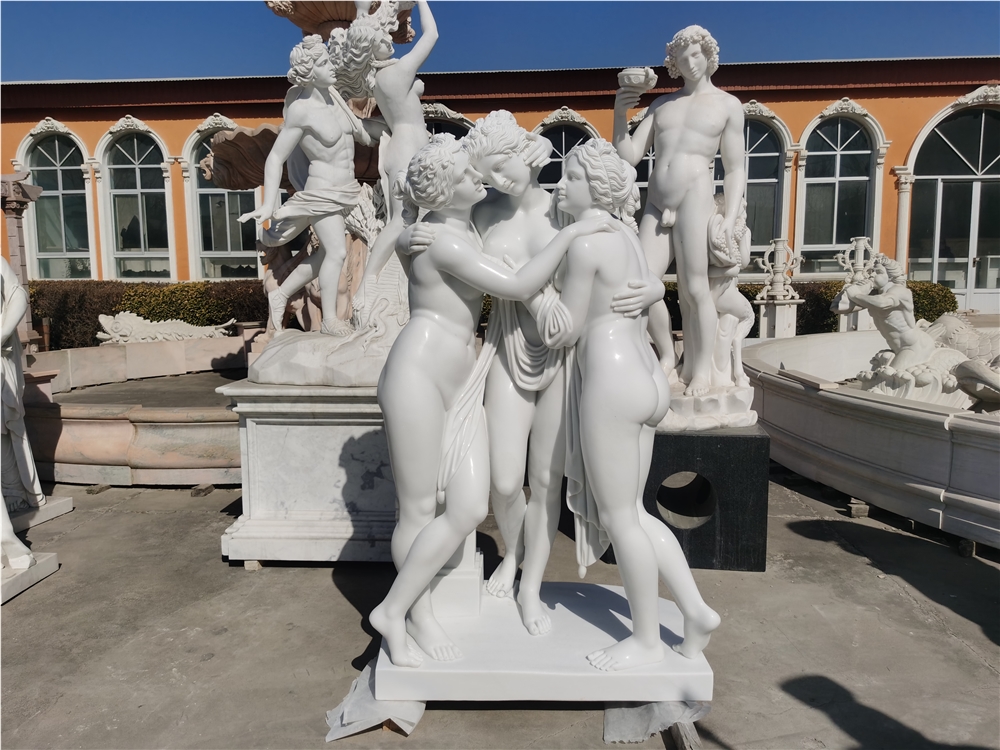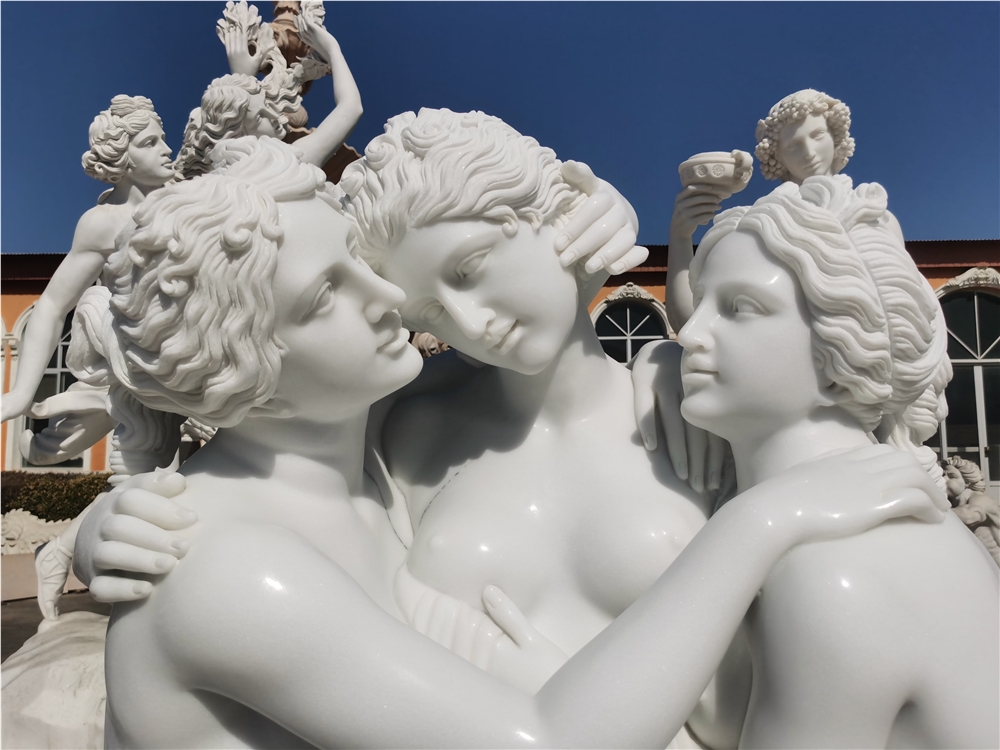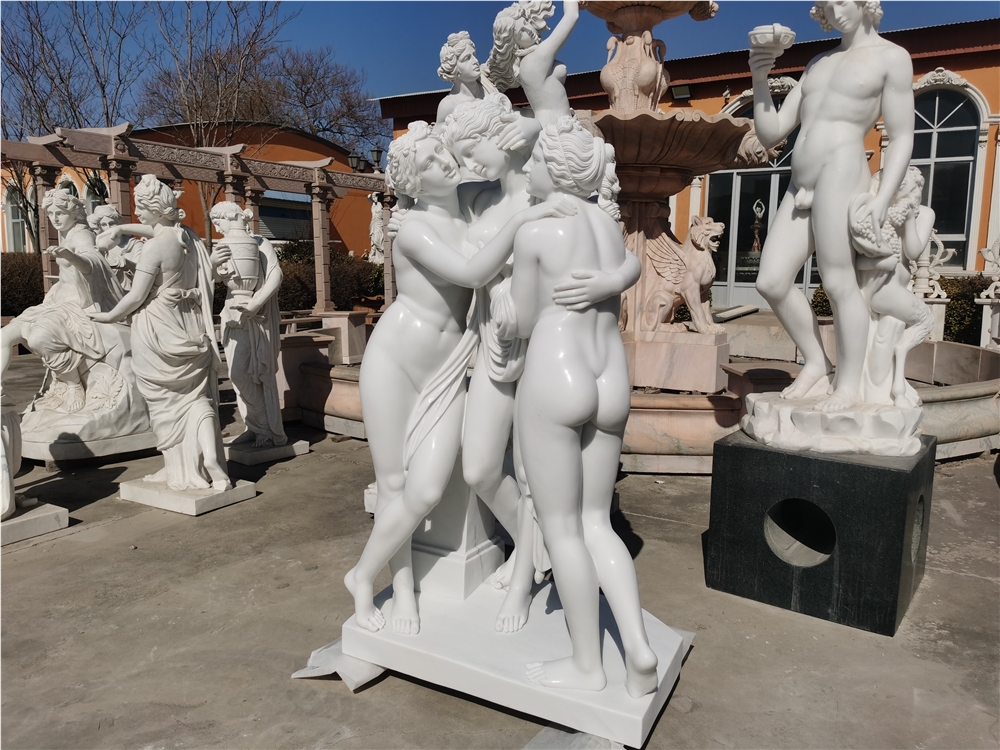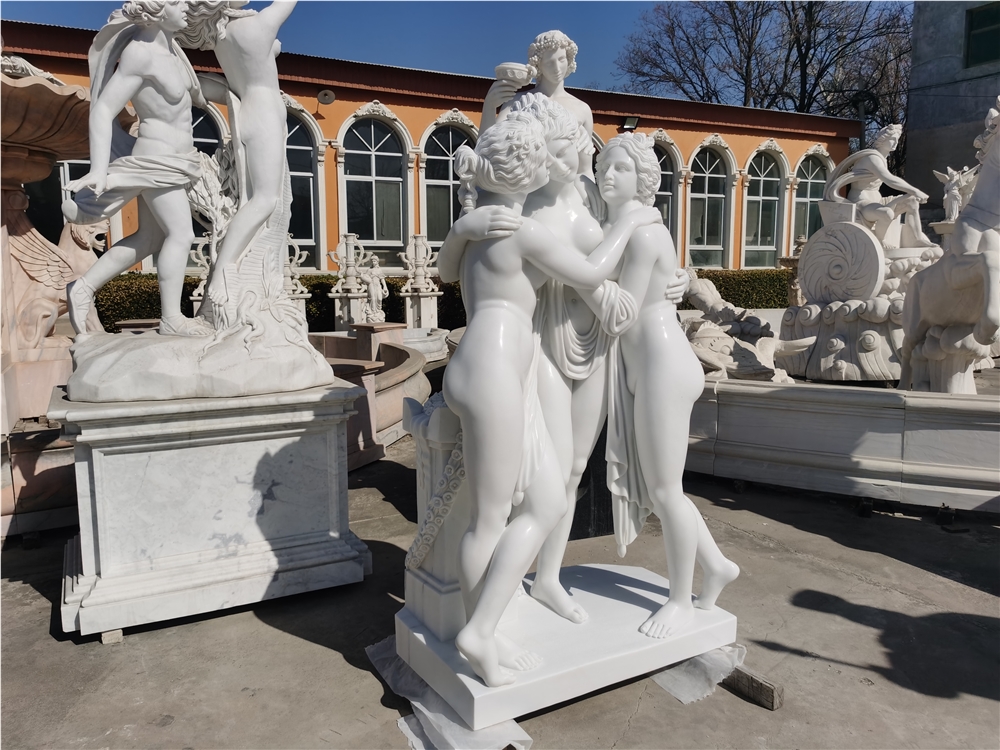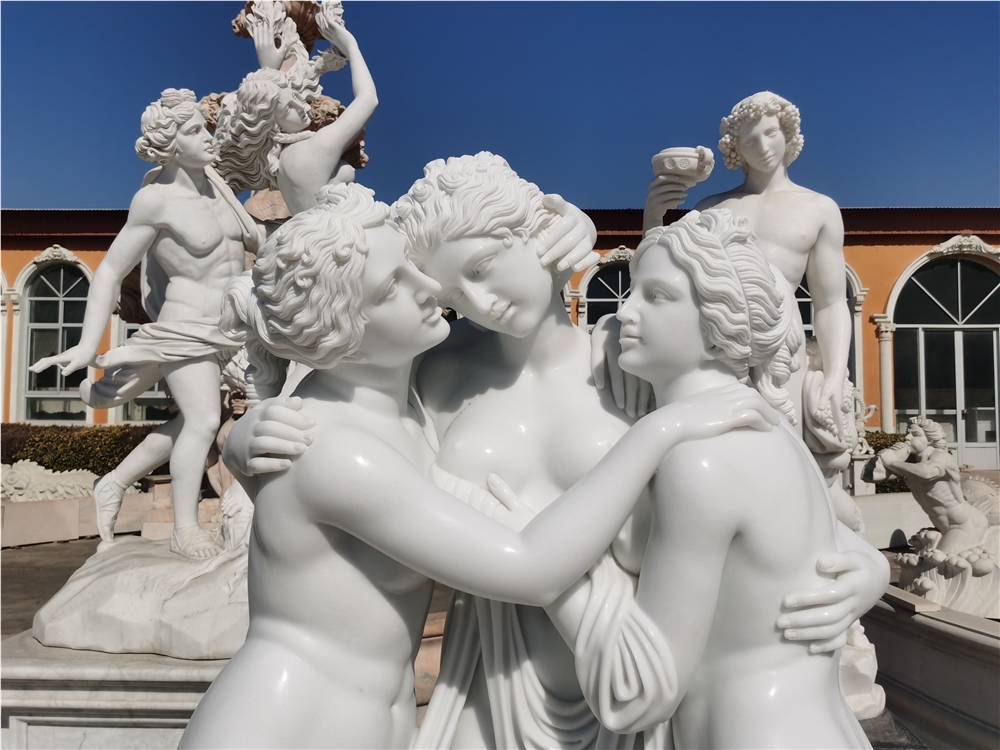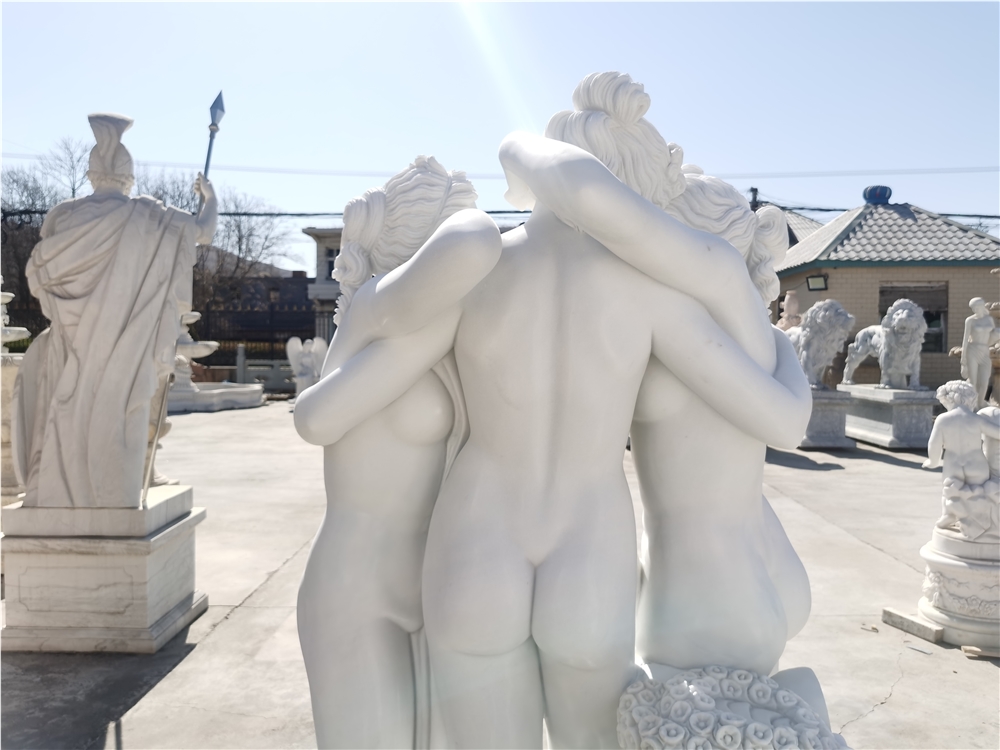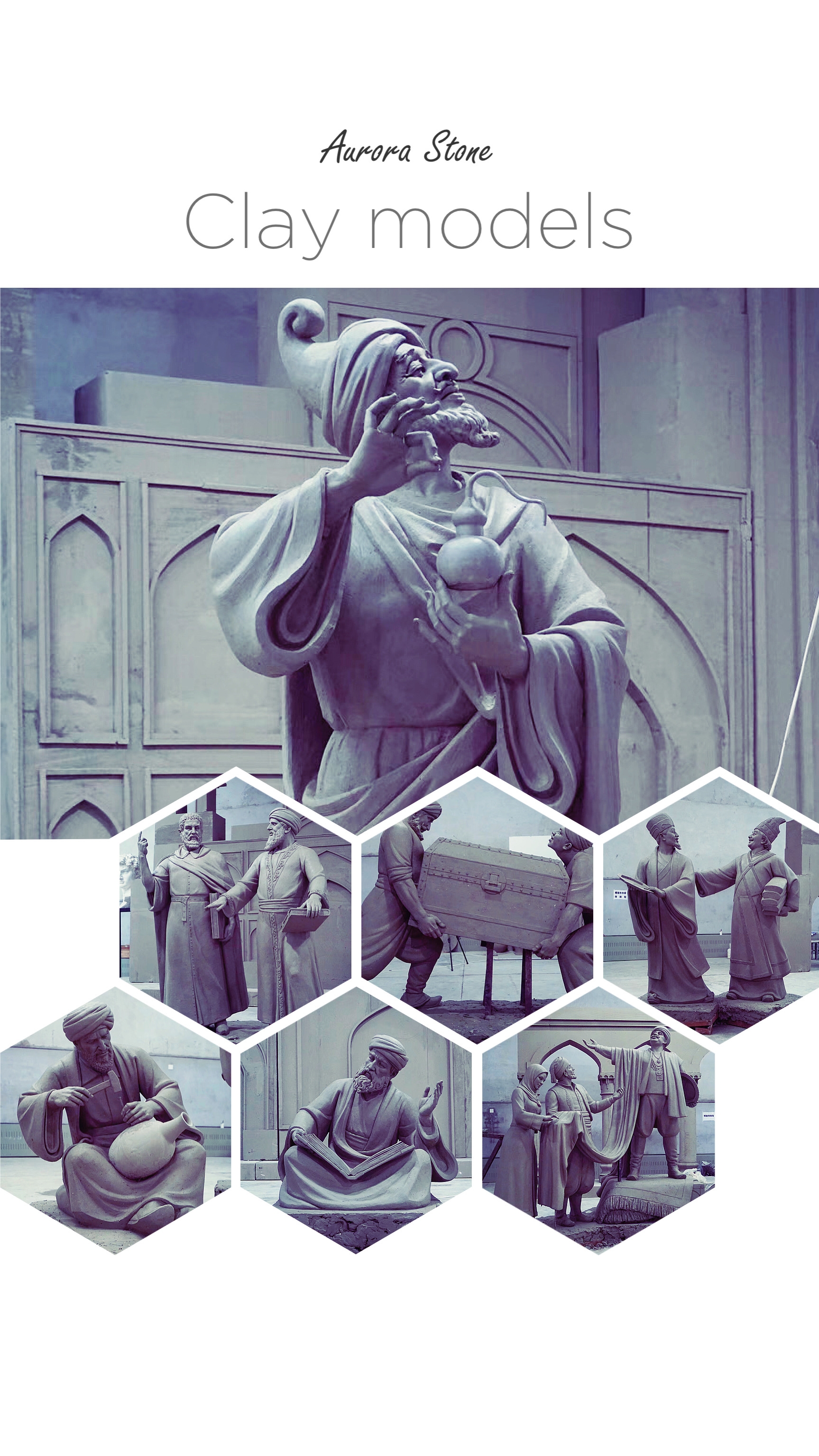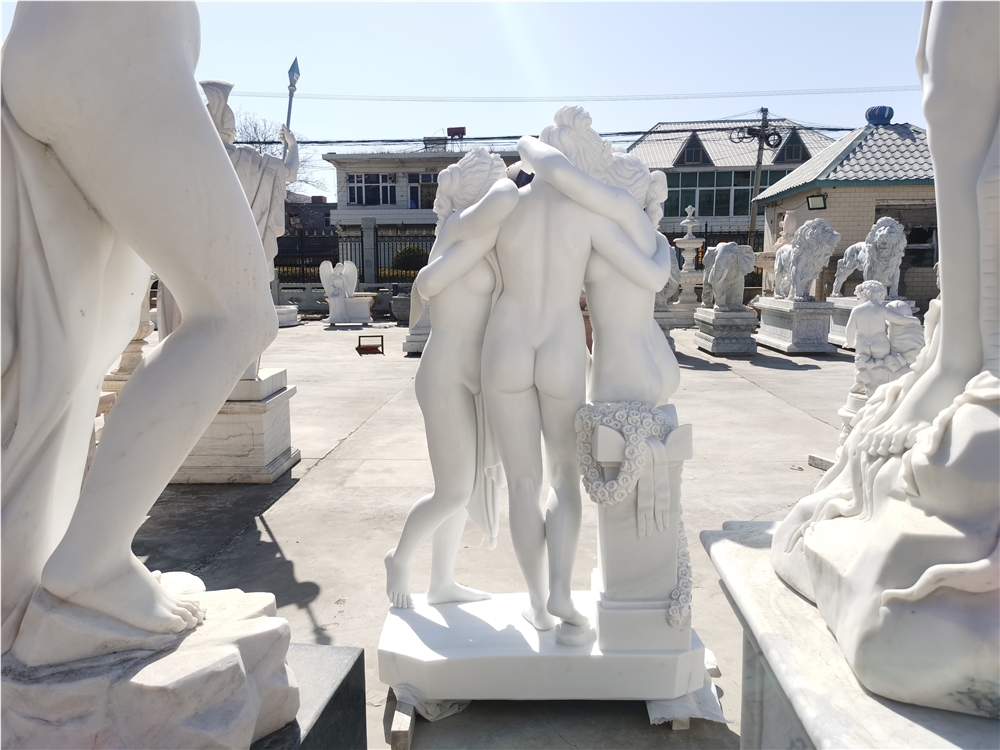stone columns, marble fountains, memorial stones, door/window surrounding, stone balustrade, marble fireplaces
| Grade | Size | Surface | Price |
|---|---|---|---|
| A | 182*150*60 cm | Polished | / |
Stone Name:
White - Marble
Origin: China
China



 3YR
3YR
stone columns, marble fountains, memorial stones, door/window surrounding, stone balustrade, marble fireplaces

The sculpture of "Three Graces", 1.82 meters high, is one of the masterpieces of Italian neoclassical sculptor Antonio Canova and was collected in the Hermitage Museum in St. Petersburg in 1901.
"The Three Graces" is a marble sculpture with a neoclassical atmosphere. The Three Goddesses are the three good messengers in mythology.
They are the daughters of Zeus, from left to right, Euphrosyne, Aglaia and Thalia. The three goddesses are the triple embodiment of beauty, charm and joy. They often appear in sculptures and paintings, and they have always been charming characters for artists.
In the work "Three Graces", the movements of the characters are smooth, one next to the other, the limbs are intertwined, and there is a soothing and calm rhythm between them, and the three bodies show elegance and harmony. This sculpture is a sign of the maturity of Canova's art from technique to content. Compared with other works, Canova can be said to have truly restored the holiness and nobility of the goddesses. The three goddesses seem to be bathing in the spring water, bowing their heads and embracing each other, presenting an intertwined beauty. Their solid bodies and soft curves all reflect the impeccable and exquisite sculpture skills of the sculptor Canova. The sophistication presented by this group of three goddess sculptures makes people can't help but explore the origin of Canova's creation. Canova will not imprison the characters in the rigid framework of neoclassicism, nor advocate the blind imitation of ancient art without independence, but skillfully injects the beauty and the light rhythm of Venice in the 18th century into the artwork, to bring it back to life.
